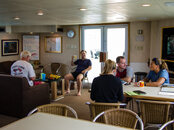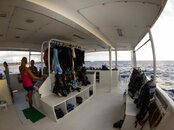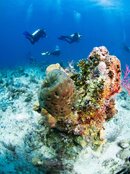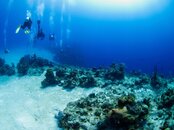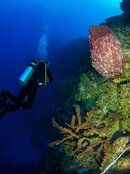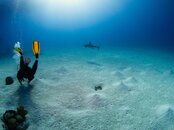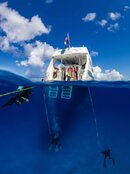Ironborn
Contributor
I have a question for those of you that have done a liveaboard in the Turks & Caicos - primarily the Explorer, which seems to be more popular and receive more favorable reviews than its Aggressor counterpart. What aspect of the experience in general and the diving in particular did you enjoy the most?
1) What jumps out at me from the reviews and trip reports is the frequency of large(r) animal sightings - sharks, rays, turtles, perhaps the occasional dolphin or manta, and maybe even a distant whale's song. It seems like the relative abundance of these larger animals is a chief selling point, if not THE chief selling point, for Turks & Caicos liveaboard diving. Would you agree?
2) What about the health and overall condition of the reefs? I did not see as much in the way of glowing assessments of the reefs, compared to say, Bonaire, and some observed hurricane damage even long after hurricanes. How would you compare the reef health there to other Caribbean destinations?
3) The reviews of the Explorer as a boat and its crew and dive operation were consistently quite favorable, more so than those of its Aggressor counterpart. They seemed to find the Explorer relatively comfortable and spoke well of the DMs.
I had been thinking about going on this liveaboard in mid-late November, but Hurricanes Irma and Maria prompted me to reconsider, given the risk of reef damage. Other members of this board suggested that it might not be too bad, given the depth of most of the sites there and the vertical topography of the many walls there. The Explorer put out this statement, describing damage to sponges and soft coral, as well sedimentation that they expect to disappear in 1-2 months (i.e. by the time of my trip). They also reported the presence of fish species that they did not normally observe.
Hurricanes Irma and Maria update - Caribbean operations
So perhaps the Explorer might still be a viable option for me. If the larger animals are a primary or THE primary selling point of the trip, then the condition of the reef would be less important, and I did not see as much to suggest that reef health was a key selling point anyway. Of course, all of this may be a moot point if the sedimentation clears up by the time of my trip. What do you think?
1) What jumps out at me from the reviews and trip reports is the frequency of large(r) animal sightings - sharks, rays, turtles, perhaps the occasional dolphin or manta, and maybe even a distant whale's song. It seems like the relative abundance of these larger animals is a chief selling point, if not THE chief selling point, for Turks & Caicos liveaboard diving. Would you agree?
2) What about the health and overall condition of the reefs? I did not see as much in the way of glowing assessments of the reefs, compared to say, Bonaire, and some observed hurricane damage even long after hurricanes. How would you compare the reef health there to other Caribbean destinations?
3) The reviews of the Explorer as a boat and its crew and dive operation were consistently quite favorable, more so than those of its Aggressor counterpart. They seemed to find the Explorer relatively comfortable and spoke well of the DMs.
I had been thinking about going on this liveaboard in mid-late November, but Hurricanes Irma and Maria prompted me to reconsider, given the risk of reef damage. Other members of this board suggested that it might not be too bad, given the depth of most of the sites there and the vertical topography of the many walls there. The Explorer put out this statement, describing damage to sponges and soft coral, as well sedimentation that they expect to disappear in 1-2 months (i.e. by the time of my trip). They also reported the presence of fish species that they did not normally observe.
Hurricanes Irma and Maria update - Caribbean operations
So perhaps the Explorer might still be a viable option for me. If the larger animals are a primary or THE primary selling point of the trip, then the condition of the reef would be less important, and I did not see as much to suggest that reef health was a key selling point anyway. Of course, all of this may be a moot point if the sedimentation clears up by the time of my trip. What do you think?




